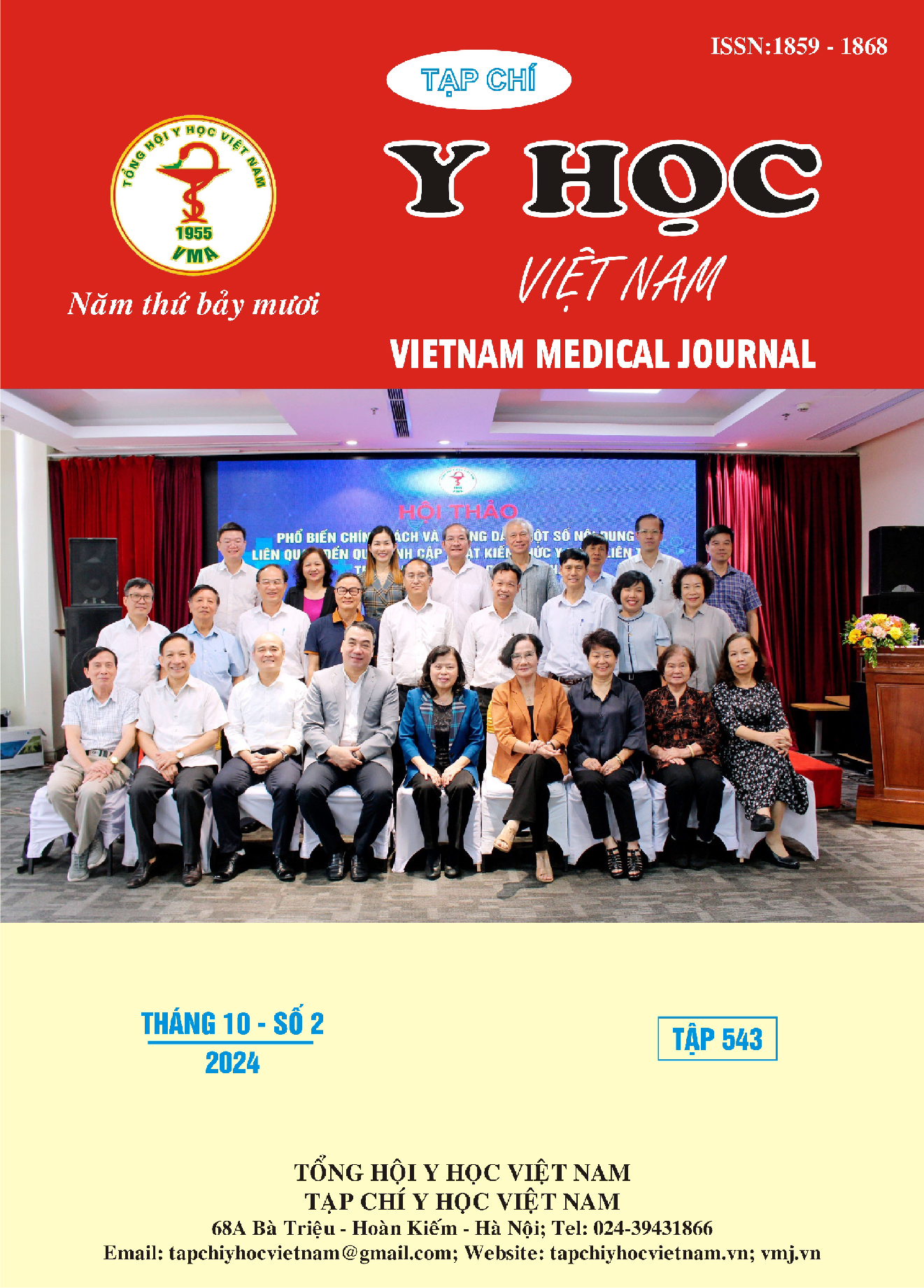CT FEATURES OF THE LEFT RENAL VEIN MORPHOLOGY AND ITS ASSOCIATION WITH BODY MASS INDEX
Main Article Content
Abstract
Purposes: To describe the characteristics of the left renal vein (LRV) in relation to body mass index (BMI) and the aortic-mesenteric angle (AMA) in adults as seen on computed tomography. Material and methods: This descriptive study was conducted on 627 individuals who underwent CTscans at Tam Anh General Hospital, Ho Chi Minh City, from July 2023 to December 2023. The study included parameters such as LRV characteristics (maximum diameter, minimum diameter, the compression ratio, LRV angle, and beak sign) and the aortic-mesenteric angle. Results: The prevalence of the beak sign is 8,8%. The average maximum diameter of the LRV is 10,23 ± 1,7 mm, and the minimum diameter is 4,72 ± 1,96 mm; the compression ratio is 2,52 ± 1,1; the LRV angle is 17,94 ± 11,19 degrees, and the AMA is 60,79 ± 24,97 degrees. Significant differences exist between males and females. The average value of the AMA increased progressively from the underweight group to the normal weight group and then to the overweight group, at 42,56 degrees, 56,37 degrees, and 74,74 degrees, respectively (p<0.001), with a moderate positive correlation (p<0.001). Conversely, the average value of the LRV angle decreased from the underweight group to the normal weight group and then to the overweight group, at 26,7 degrees, 18,71 degrees, and 14,36 degrees, respectively (p<0.001), with a weak negative correlation (p<0.001). Conclusion: There is a correlation between BMI and both the aortic-mesenteric angle and the LRV angle
Article Details
Keywords
Nutcracker phenomenon, Nutcraker syndrome, Renal vein entrapment syndrome, beak sign, BMI.
References
2. Ahmed K, Sampath R, Khan M. Current trends in the diagnosis and management of renal nutcracker syndrome: a review. European Journal of Vascular and Endovascular Surgery. 2006; 31(4):410-416.
3. Orczyk K, Wysiadecki G, Majos A, Stefańczyk L, Topol M, Polguj M. What Each Clinical Anatomist Has to Know about Left Renal Vein Entrapment Syndrome (Nutcracker Syndrome): A Review of the Most Important Findings. Biomed Res Int. 2017;2017:1746570. doi:10.1155/2017/1746570
4. Shin J, Lee J, Kim M. The prevalence, physical characteristics and diagnosis of nutcracker syndrome. 2006
5. Ribeiro FS, Puech-Leão P, Zerati AE, Nahas WC, David-Neto E, De Luccia N. Prevalence of left renal vein compression (nutcracker phenomenon) signs on computed tomography angiography of healthy individuals. J Vasc Surg Venous Lymphat Disord. Nov 2020;8(6):1058-1065. doi:10.1016/j.jvsv.2020.04.005
6. Wang, Ren, et al. Value of magnetic resonance imaging indices of left renal vein entrapment in the diagnosis of nutcracker syndrome in children. Translational Pediatrics, 2021, 10.5: 1285.
7. Park, Se Jin et al. Low body mass index in nutcracker phenomenon: an underrecognized condition. Kidney International, Volume 84, Issue 6, 1287
8. Byun E, Kim H, Park S, Han Y, Kwon T, Cho Y. Body Mass Index of Patients with Nutcracker Syndrome. Ann Phlebology, 2020;18:51-54. https://doi.org/10.37923/phle.2020.18.3.51


